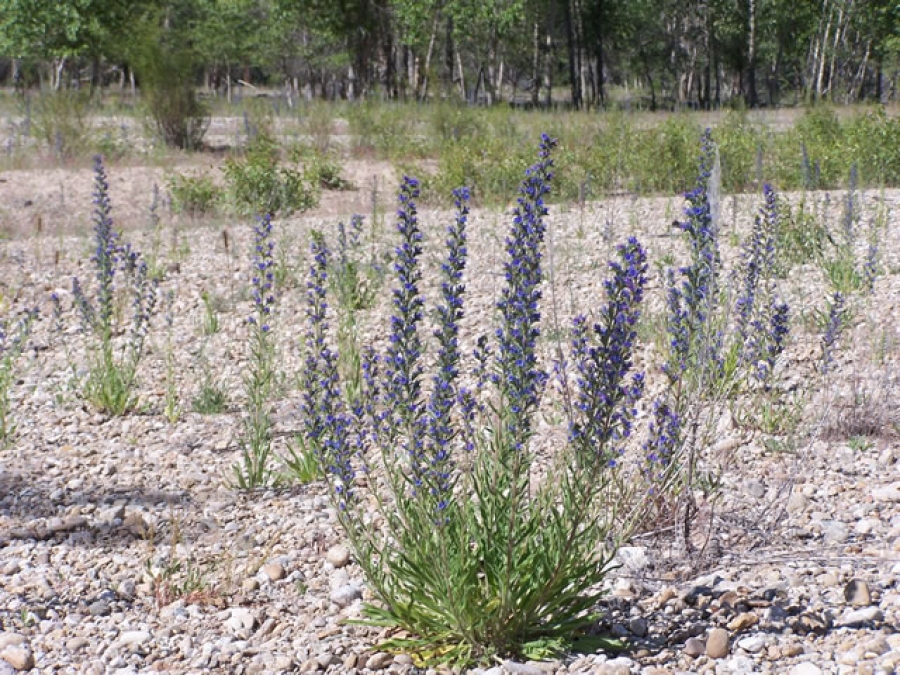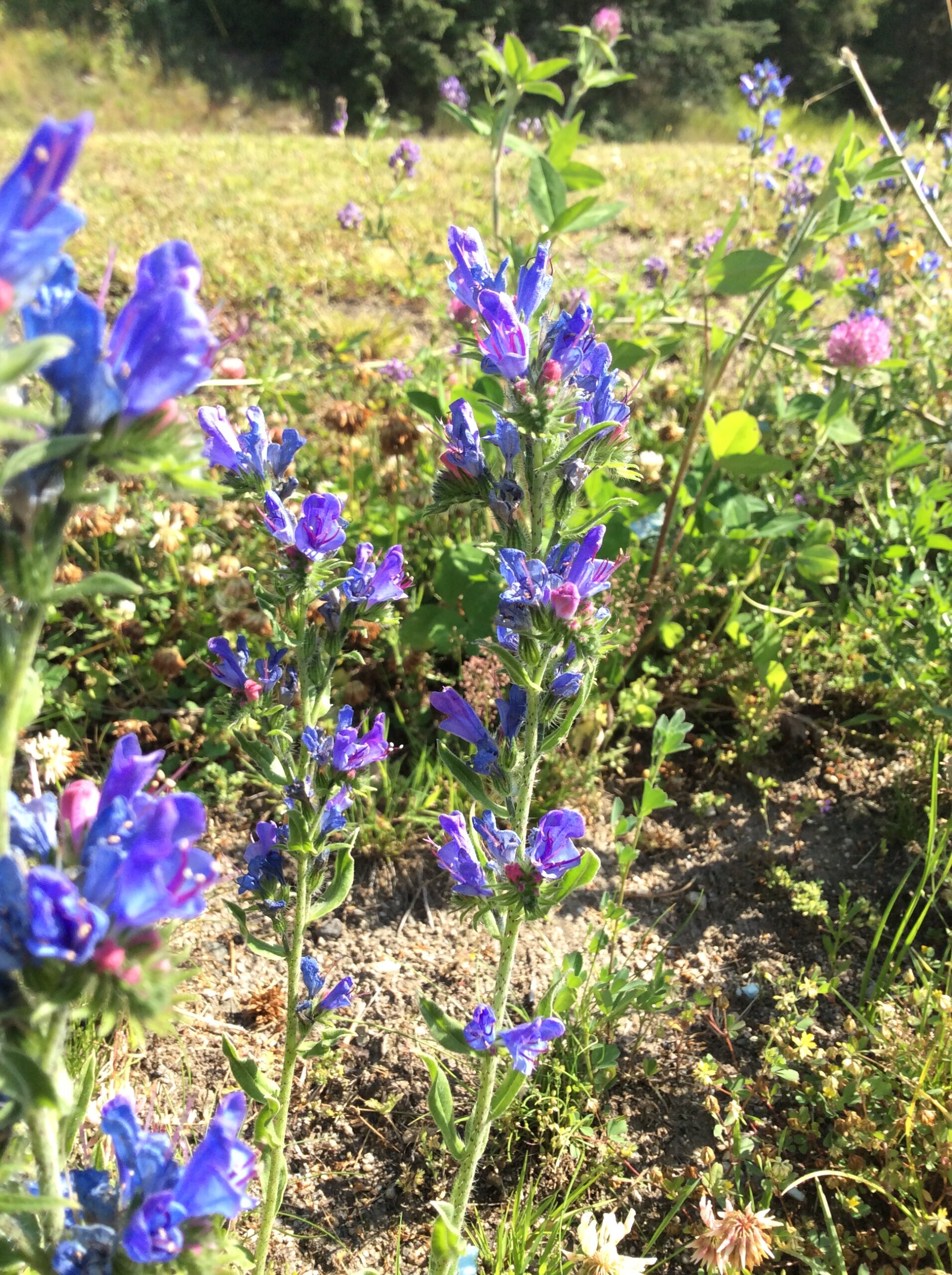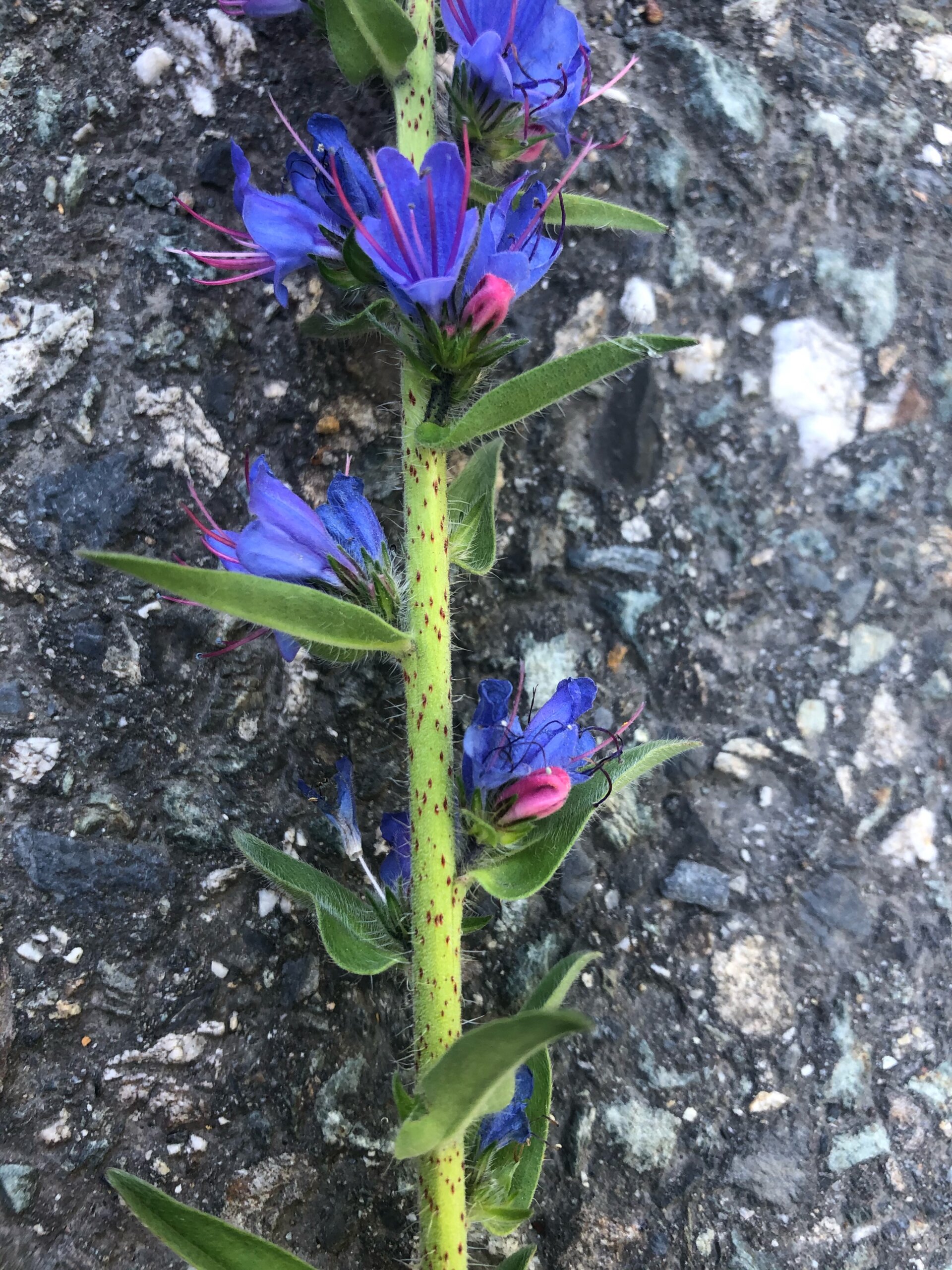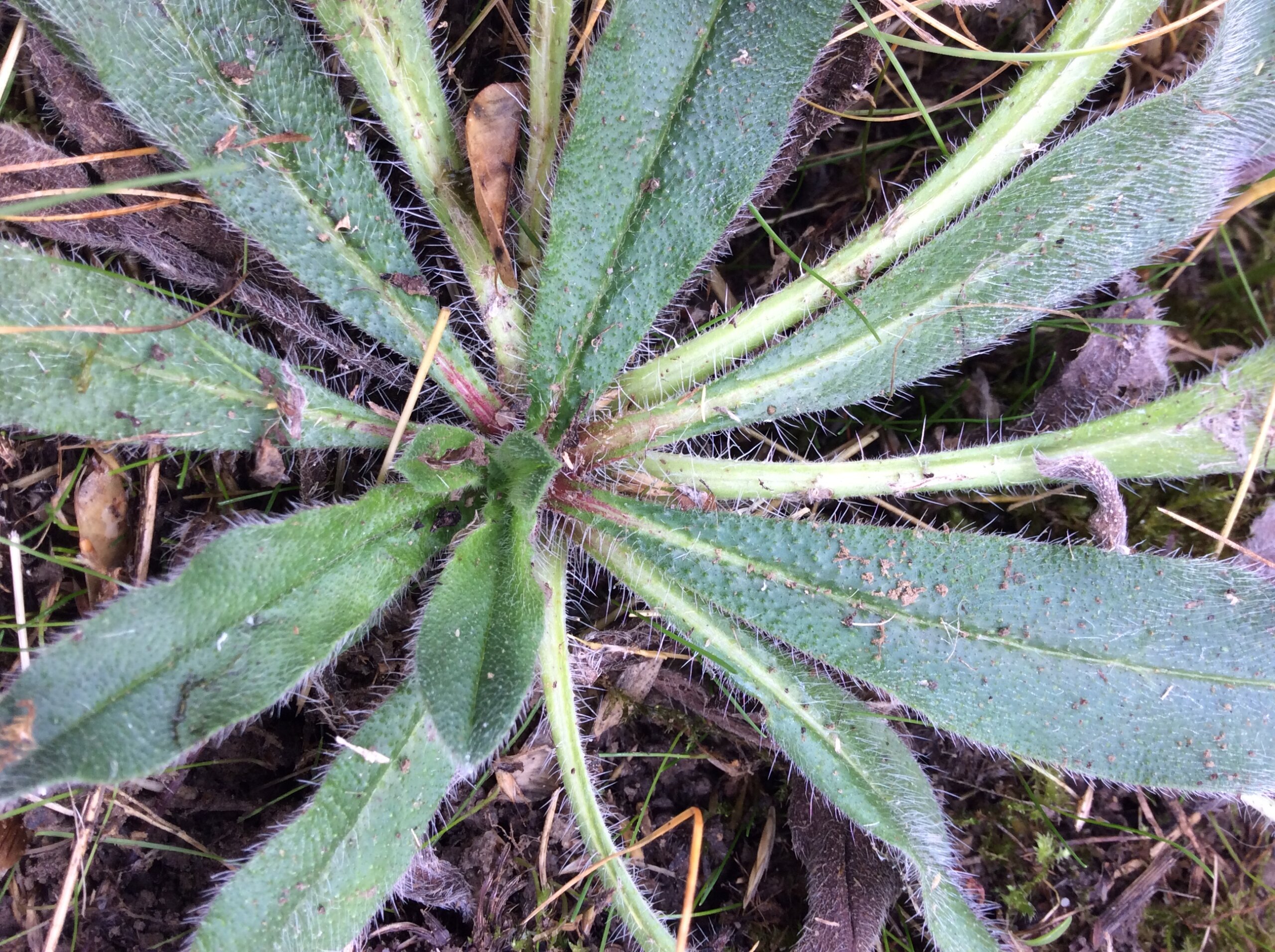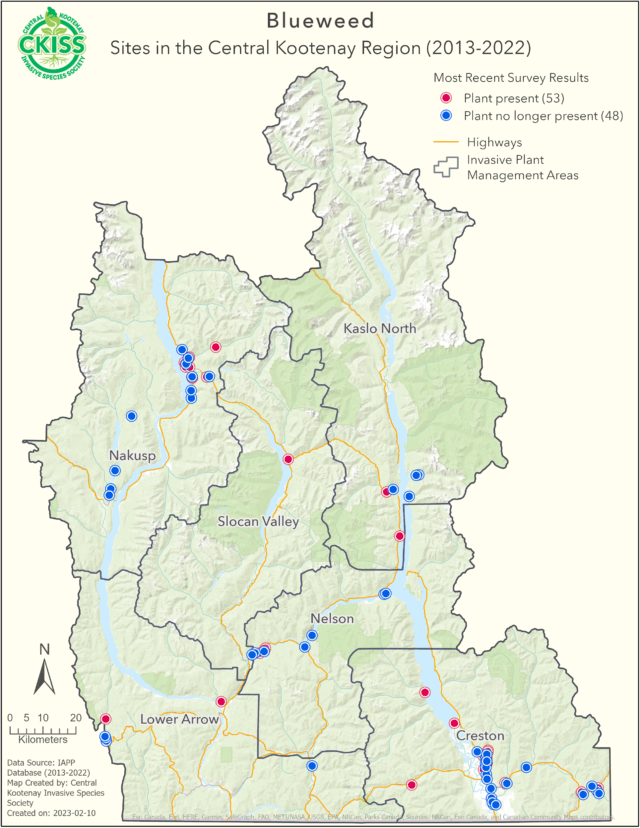Echium vulgare
Description
- Native to Europe
- Biennial or short-lived perennial
- Blue, purple, or pink flowers on upper part of stalk
- Small stiff hairs on stem and leaves, leaves feel rough
- Stems have dark spots
- Grows in dry, rocky, and/or shallow soils.
Consequences of invasion
- Invades rangelands and pastures, impacting livestock.
- Contain pyrrolizidine alkaloids, which can be toxic to horses and cattle when ingested.
- Seeds can contaminate clover and other crop seeds.
- Host for plant diseases including alfalfa mosaic virus and tobacco mosaic virus.
- Seeds can remain viable for up to 36 months, depending on conditions.
Status in the CKISS region
- Blueweed is currently classified as Eradicate on the CKISS Annual Priority List.
- Blueweed is present in the region with very limited distribution, so eradication is feasible. Please report findings immediately.
- CKISS is taking steps to monitor and manage blueweed.
- To learn more about how CKISS classifies and manages invasive species, see our Invasive Species Priority Lists page.
Integrated pest management options
- Pull or dig plants when soil is moist to control small infestations.
- Use proper pasture and rangeland management practices like minimizing soil disturbance and overgrazing.
- Chemical control may work on larger infestations.
- Become PlantWise and learn about Grow Me Instead. Select alternative, non-invasive plants.
Additional resources


